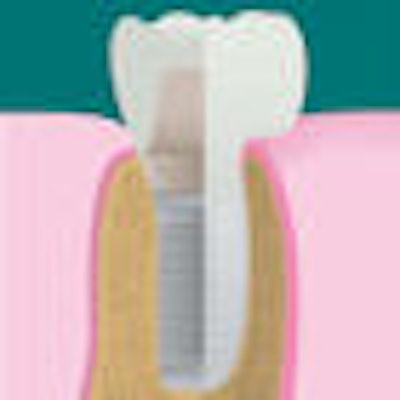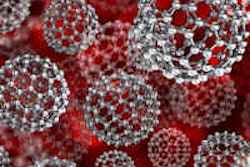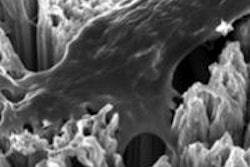
The strength of implant osseointegration in aged titanium surfaces was significantly less than in newly prepared titanium surfaces in the early stages of healing in an animal model, according to a new study Implant Dentistry (October 2012, Vol. 21:5, pp. 415-421).
The study authors, from the Yonsei University College of Dentistry and the University of California, Los Angeles (UCLA) School of Dentistry, describe the phenomenon as "the time-dependent degradation of the biological capability of titanium."
"In the past, titanium aging has been overlooked," Jae Hoon Lee, DDS, MS, PhD, an assistant professor in the department of prosthodontics at Yonsei, told DrBicuspid.com. "For future clinical studies, it is important to take titanium aging into account."
“In the past, titanium aging has been overlooked.”
In order to meet the standard of new techniques of implant surface rejuvenation, a new guideline of titanium preservation expiration date will become an essential part of surgery in daily practice, he added.
The osseointegration strength of aged titanium surfaces is reduced to less than 50% compared with newly prepared titanium surfaces, Dr. Lee and his fellow researcher concluded.
"Moreover, a higher than 90% bone-implant contact (BIC) obtained for new titanium surfaces can be reduced to less than 60% for the aged surfaces," they wrote. "This degradation was primarily associated with considerably reduced capability of aged titanium surfaces to attract proteins and osteogenic cells."
Importance of BIC
Understanding why BIC does not reach an ideal 100% is "a crucial unaddressed question," the researchers noted.
To better understand what holds dental implants back from achieving it, they took a step back to consider the factors of successful osseointegration. Titanium is an ideal material due to its myriad advantageous properties, such as corrosion resistance, strength, and the ability to apply surface modifications. And surfaces roughened on a micron scale can improve BIC. Beyond that, new research is examining the possibility that nano-level structures added to roughened surfaces may further improve bone-titanium integration.
While early results are promising on that front, a more urgent matter is understanding data from recent studies that "reported significant changes in osseoconductivity and other biological capabilities of titanium over time (with an increased period after processing the surface)," the study authors wrote. Understanding that data could help close the gap in our understanding of why BIC has yet to reach 100%, they added.
There were several instances where new titanium outperformed aged titanium, they found in their review of the literature. One dataset examined osteoblast differentiation and mineralization (Biomaterials, October 2009, Vol. 30:29, pp. 5352-5363). In this case, the researchers measured alkaline phosphatase (ALP) activity, since, when elevated, it is typically due to active bone deposition. So they cultured human osteoprogenitor cells and rat bone marrow-derived osteoblasts on titanium disks of different topographies and ages. In their comparison of ALP activity, they found that the ALP activity on 4-week-old surfaces was reduced compared with the new surfaces by 60%, 60%, and 70% on acid-etched, machined, and sandblasted surfaces, respectively.
In in vivo testing, which compared acid-etched implants with disparate storage times of 2 days, 3 weeks, and 4 weeks, the researchers found a statistically significant difference in osseointegration. "It was noteworthy that the 4-week-old implant showed only a less than half level of osseointegration compared with the new implants," they wrote. "Such substantial difference remained significant at later healing stage of week 4 in the model."
In the course of the same study, researchers performed a 2-week bone-healing study where they compared newly prepared acid-etched implants versus 4-week-old similarly prepared implants in a rat femur model. After 2 weeks, contiguous, extensive bone formation covered a large area of the new implants. There was little soft-tissue intervention in the new formed bone and titanium. In the old implants, the coverage was limited, fragmented, and localized. There was much more soft-tissue intervention as well.
"The BIC for the new surface reached more than 90% whereas it was lower than 60% for 4-week-old implants," the researchers noted. Additionally, there was greater BIC at 2 weeks of healing in the new implants than after 4 weeks of healing in the older implants.
There are limitations to the data, noted Garrett Cale Smith, PhD, CEO of implant company Nasseo, who has a background in surface-bonding implant technology.
"In order to evaluate how this study will impact dental implant technology, more in vivo studies in larger animal models with longer time points and with more detailed materials science analysis that highlight the cleaning steps after surface treatment are needed," Smith told DrBicuspid.com.
He also had questions about some of the procedures in the rat-healing study.
"From a materials science perspective, it was unclear how the surfaces were cleaned, which could vary the oxide properties during the wait time between implantation after 1 day or after 4 weeks," he noted. "It is known that residual acid or grit on the surface, if not removed by proper cleaning and/or heat treatment, can significantly alter the in vivo bone response."
Titanium regulation needed
Even so, the research outlined in the review should spur action and could lead to standardization of titanium products, according to the Implant Dentistry study authors. There are clinical implications as well.
"In fact, there is no regulation or expiration of manufacture, distribution, and storage in these products, except for the expiration of sterilization, which is normally 5 years," the researchers wrote. Given the lag between manufacture and shipping, it can be assumed that many commercial products are "uncontrollably and substantially damaged."
As a result, future research should explore solutions to the limitations presented by aged titanium. There may be one already, according to Dr. Lee.
"Ultraviolet (UV) treatment (photo functionalization) has been proved to be the most effective factor in solving the problem of titanium aging," he said. "The device will be available in the clinic very shortly."
This UV technique was originally developed by Takahiro Ogawa, DDS, PhD, a professor at the UCLA School of Dentistry and the director of the Laboratory of Bone and Implant Sciences at the Weintraub Center for Reconstructive Biotechnology, to rejuvenate and reactivate the titanium surface. Dr. Ogawa collaborated with Dr. Lee on the Implant Dentistry review.
The data collected in the review was limited in that it only examined titanium aged up to 4 weeks. Consequently, research going forward should seek to learn how titanium aged beyond 4 weeks impacts osseointegration. The researchers described the need for such data as "urgent."
Smith agreed. "In terms of evaluating the clinical impact of time-dependent aging of titanium, it will be important to look at longer storage time points than 4 weeks as medical devices can have shelf lives of many months to years," he said.



















